Abstract
The electrocardiograms of 100 patients with rapid and regular PP intervals during atrial arrhythmias (because of atrial tachycardia or flutter, or pacing) were examined for periods of irregular atrioventricular conduction. This irregular conduction corresponds to an alternating Wenckebach phenomenon, of a type that can be determined from simple rules. The different types of conduction encountered in different patients and the changes seen in the same patient suggest that the atrioventricular node functions physiologically with 3 levels of sequential block. The different prevalence of the 2 types of alternating Wenckebach block may reflect functional differences at the level of the atrioventricular node.
Full text
PDF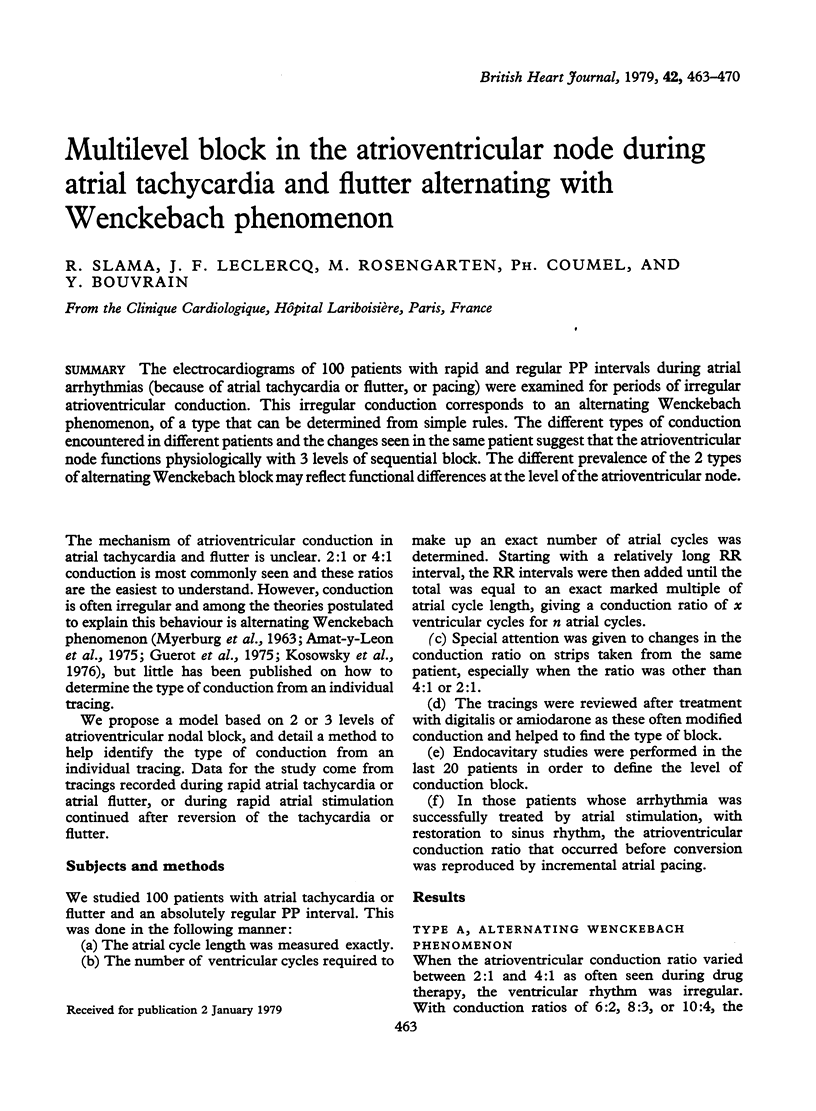
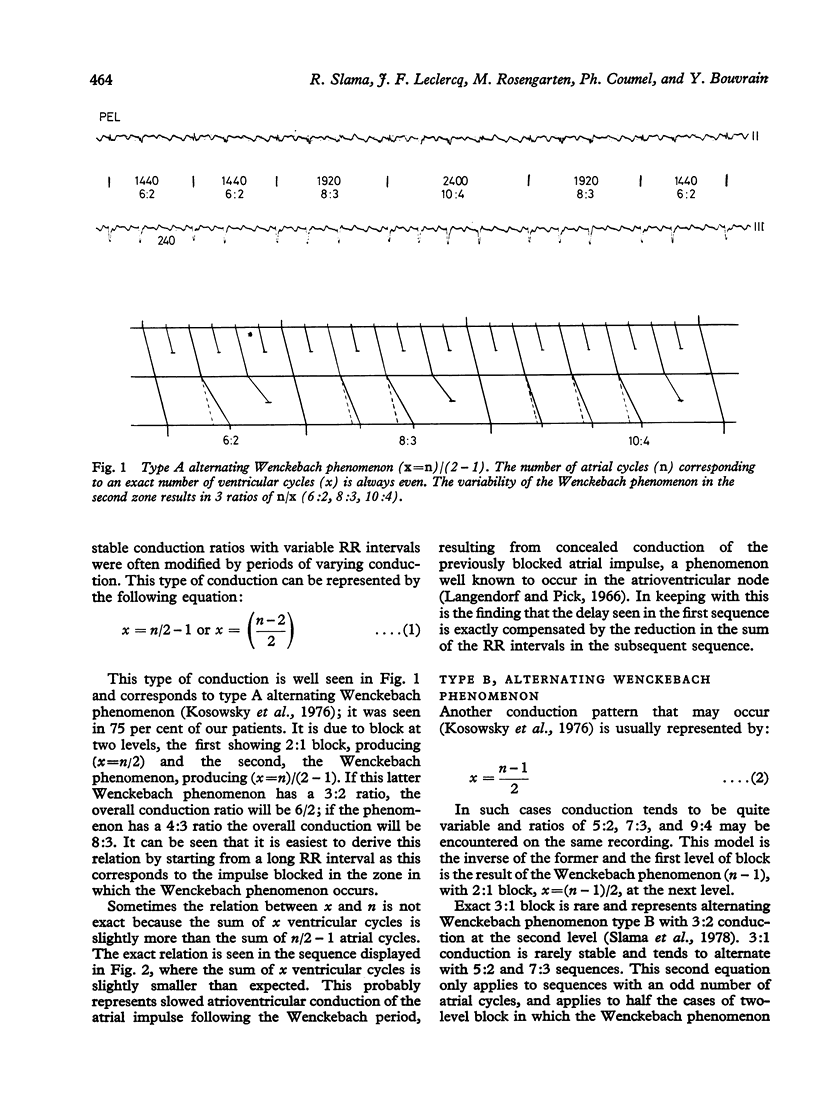
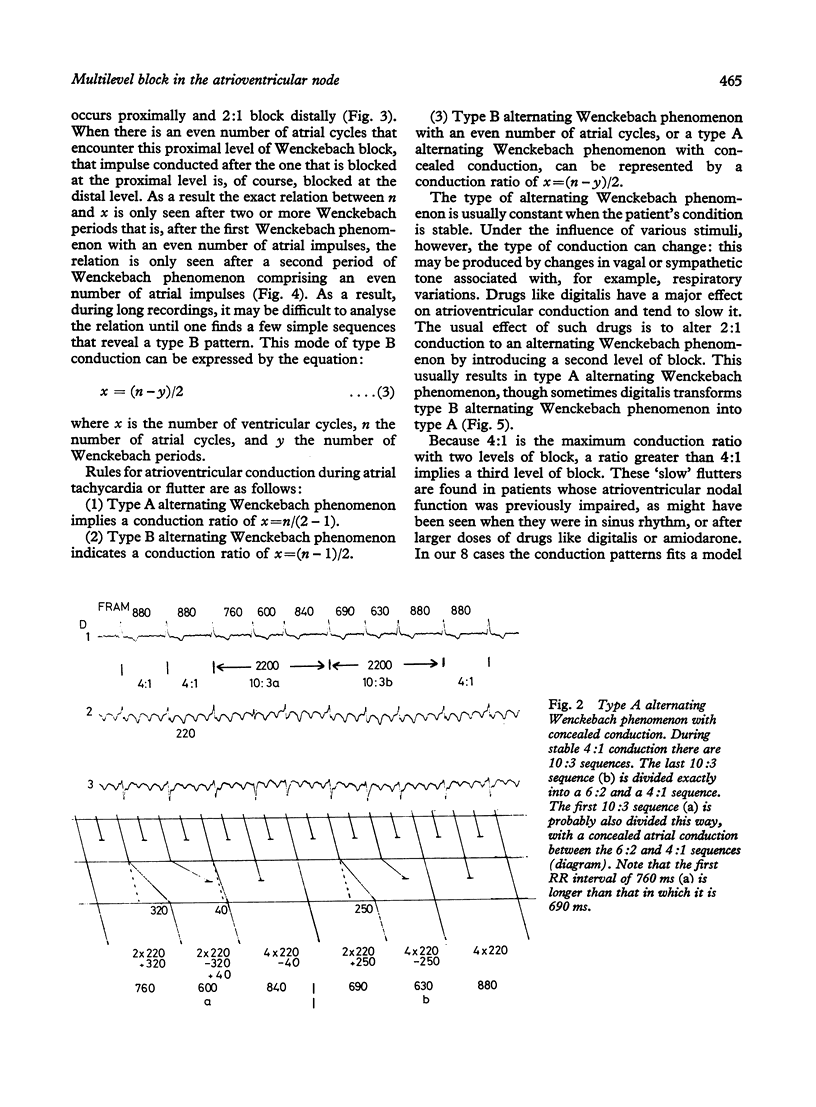
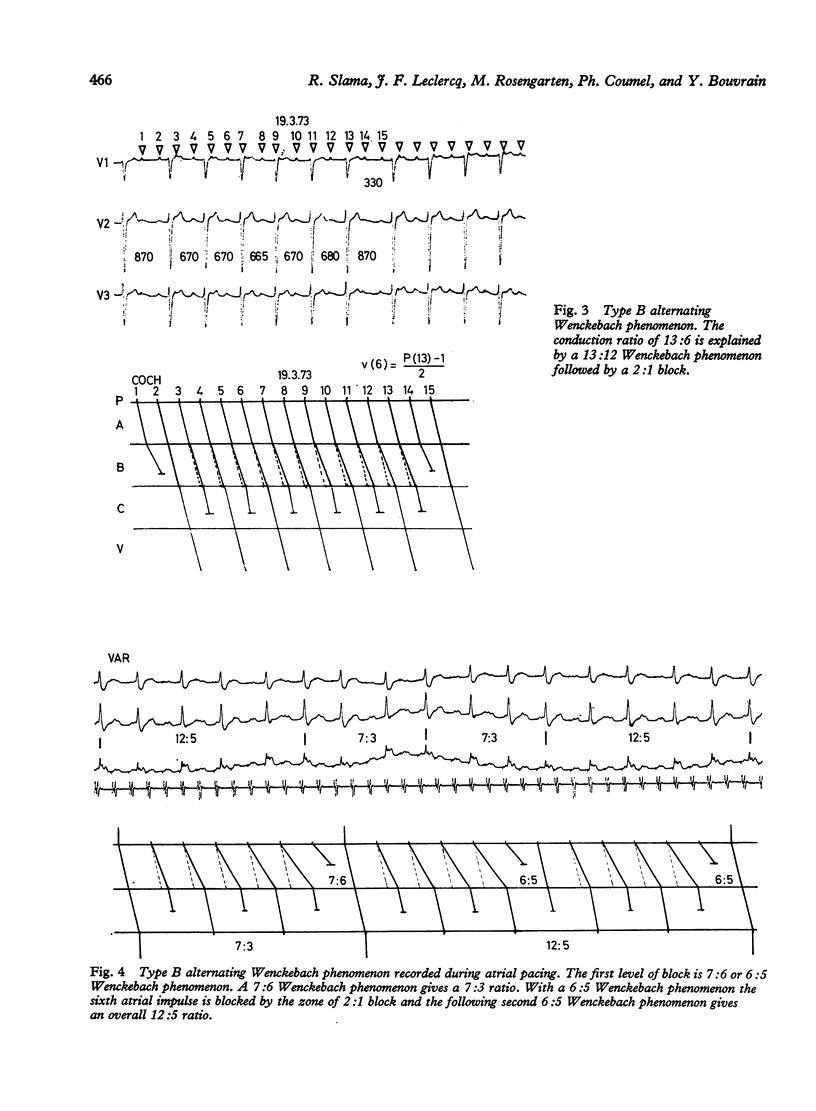
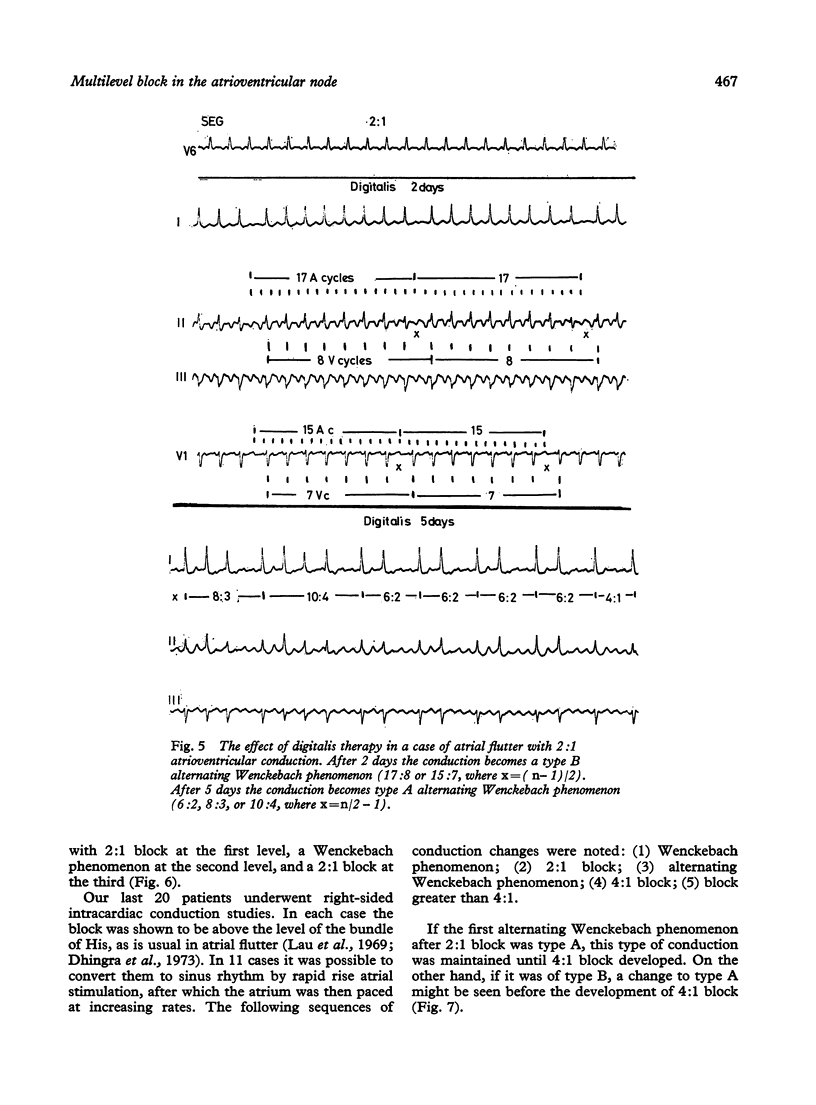
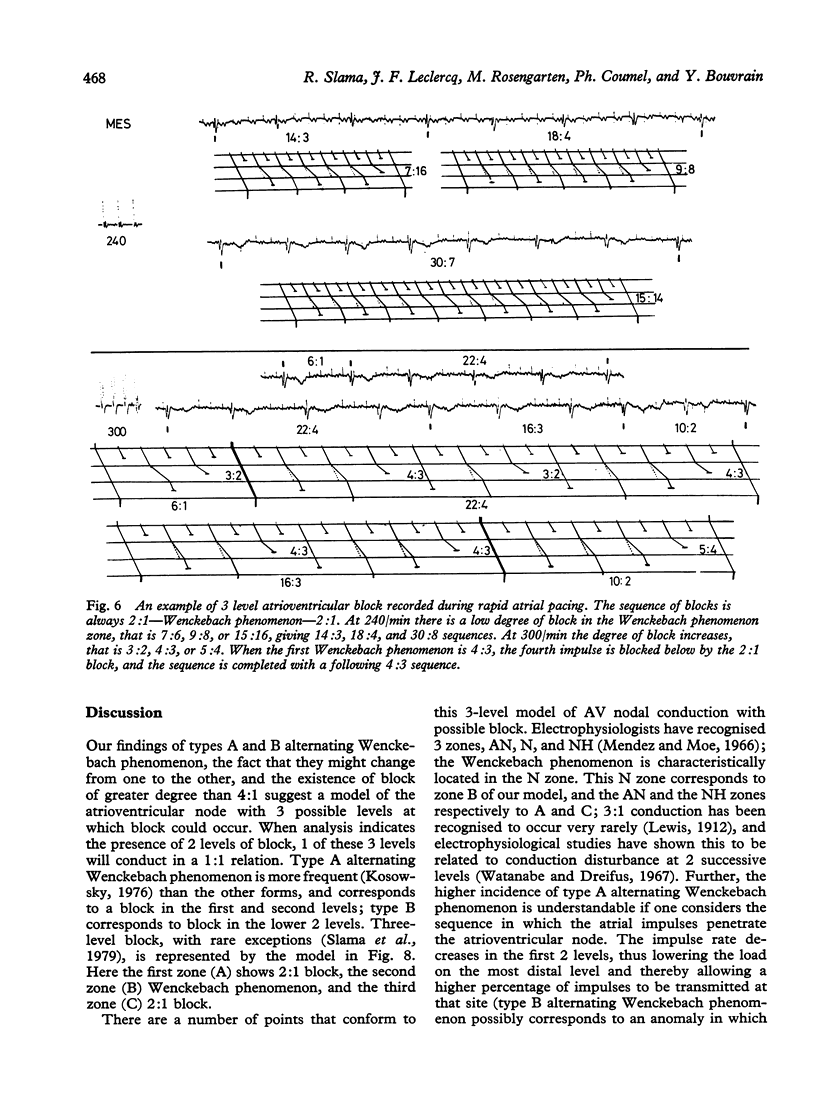
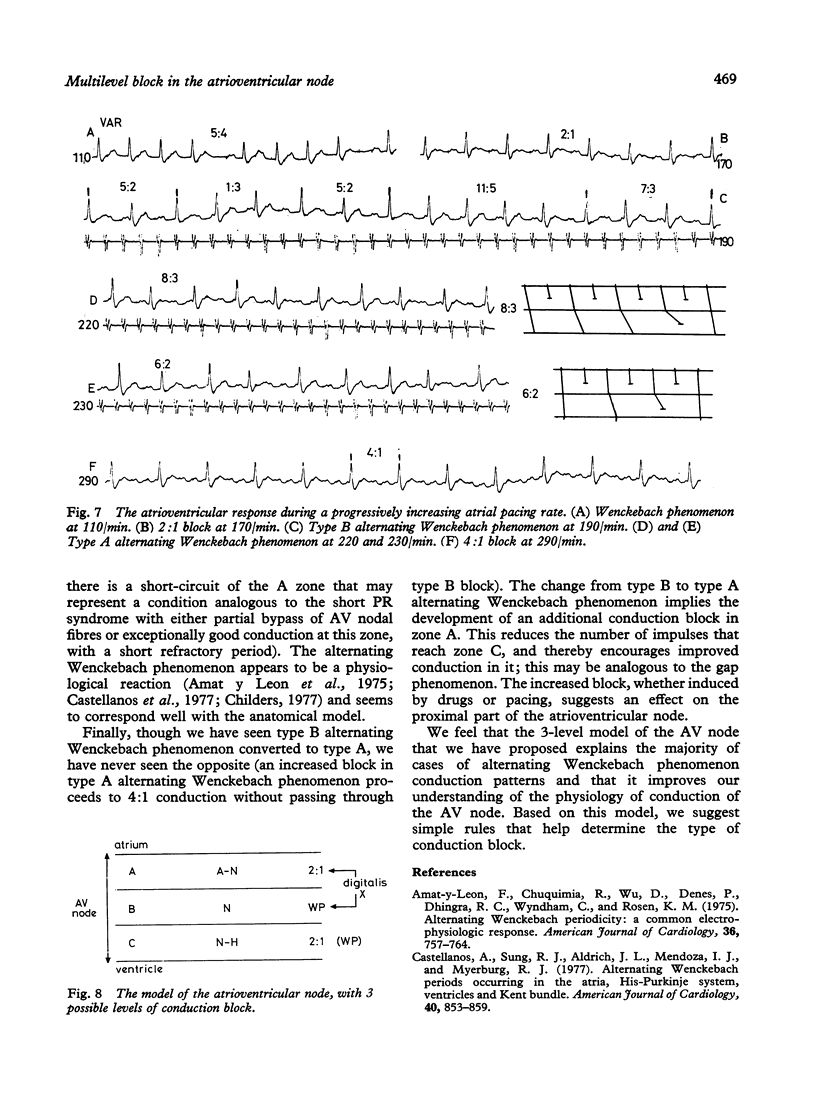
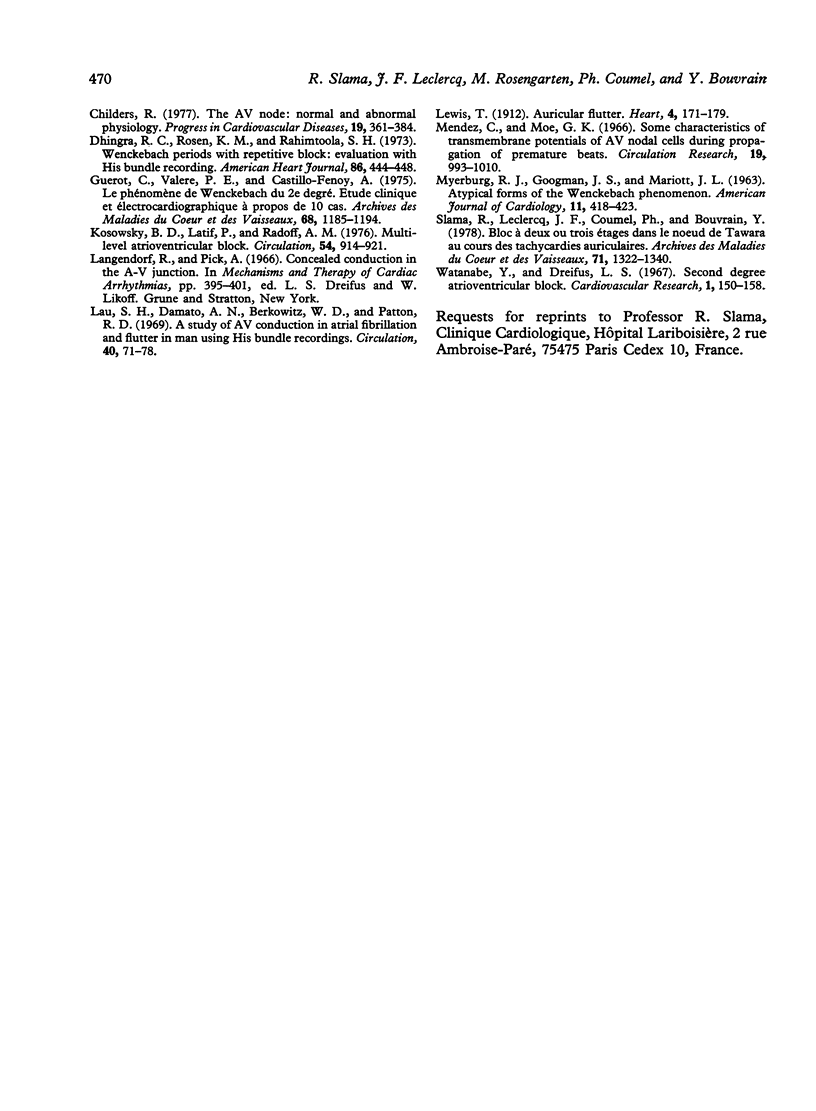
Selected References
These references are in PubMed. This may not be the complete list of references from this article.
- Amat y Leon F., Chuquimia R., Wu D., Denes P., Dhingra R. C., Wyndham C., Rosen K. M. Alternating Wenckebach periodicity: A common electrophysiologic response. Am J Cardiol. 1975 Nov;36(6):757–764. doi: 10.1016/0002-9149(75)90457-9. [DOI] [PubMed] [Google Scholar]
- Castellanos A., Sung R. J., Aldrich J. L., Mendoza I. J., Myerburg R. J. Alternating Wenckebach periods occurring in the atria, His-Purkinje system, ventricles and Kent bundle. Am J Cardiol. 1977 Dec;40(6):853–859. doi: 10.1016/0002-9149(77)90034-0. [DOI] [PubMed] [Google Scholar]
- Childers R. The AV node: normal and abnormal physiology. Prog Cardiovasc Dis. 1977 Mar-Apr;19(5):361–384. doi: 10.1016/0033-0620(77)90016-0. [DOI] [PubMed] [Google Scholar]
- Dhingra R. C., Rosen K. M., Rahimtoola S. H. Wenckebach periods with repetitive block: evaluation with His bundle recording. Am Heart J. 1973 Oct;86(4):444–448. doi: 10.1016/0002-8703(73)90134-8. [DOI] [PubMed] [Google Scholar]
- Guérot C., Valère P. E., Castillo-Fenoy A. Le phénomène de Wenckebach du 2e degré. Etude clinique et électrocardiographique à propos de 10 cas. Arch Mal Coeur Vaiss. 1975 Nov;68(11):1185–1194. [PubMed] [Google Scholar]
- Kosowsky B. D., Latif P., Radoff A. M. Multilevel atrioventricular block. Circulation. 1976 Dec;54(6):914–921. doi: 10.1161/01.cir.54.6.914. [DOI] [PubMed] [Google Scholar]
- Lau S. H., Damato A. N., Berkowitz W. D., Patton R. D. A study of atrioventricular conduction in atrial fibrillation and flutter in man using His bundle recordings. Circulation. 1969 Jul;40(1):71–78. doi: 10.1161/01.cir.40.1.71. [DOI] [PubMed] [Google Scholar]
- MYERBURG R. J., GOODMAN J. S., MARRIOTT H. J. Atypical forms of the Wenckebach phenomenon. Am J Cardiol. 1963 Mar;11:418–423. doi: 10.1016/0002-9149(63)90140-1. [DOI] [PubMed] [Google Scholar]
- Mendez C., Moe G. K. Some characteristics of transmembrane potentials of AV nodal cells during propagation of premature beats. Circ Res. 1966 Dec;19(6):933–1010. doi: 10.1161/01.res.19.6.993. [DOI] [PubMed] [Google Scholar]
- Slama R., Leclercq J. F., Coumel P., Bouvrain Y. Bloc à deux ou trois étages dans le noeud de Tawara au cours des tachycardies auriculaires. Arch Mal Coeur Vaiss. 1978 Dec;71(12):1322–1340. [PubMed] [Google Scholar]
- Watanabe Y., Dreifus L. S. Second degree atrioventricular block. Cardiovasc Res. 1967 Apr;1(2):150–158. doi: 10.1093/cvr/1.2.150. [DOI] [PubMed] [Google Scholar]


